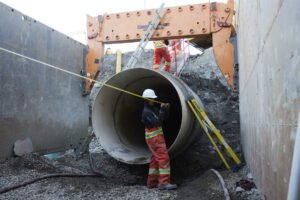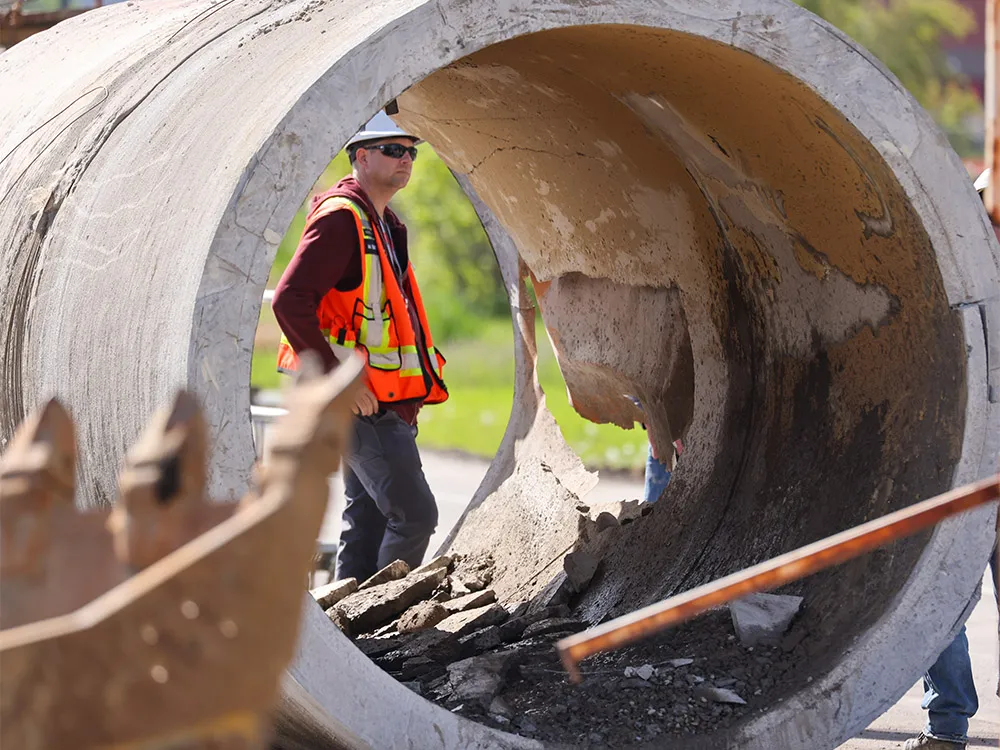What is a Calgary Water Main Break?
A Calgary water main break refers to a failure in the city’s underground water supply pipes, which can lead to significant disruption in water services. These pipes serve as critical infrastructure, delivering potable water from treatment facilities to households, businesses, and other establishments throughout the city. Typically made from materials such as ductile iron and PVC, water mains are engineered to withstand substantial pressure and environmental conditions. However, various factors can compromise their integrity, leading to breaks.
Water main breaks are often located in areas with heavy traffic, extreme weather fluctuations, or aging infrastructure. Calgarian neighborhoods frequently experience these breaks in older parts of the city where the water mains have not been updated in many years. Environmental conditions such as freezing temperatures, soil erosion, or seismic activity can exacerbate the likelihood of these incidents. The implications of a break can be far-reaching, affecting not just the immediate water supply but also causing road closures, infrastructure damage, and economic losses. Furthermore, when a Calgary water main break occurs, it can lead to an interruption in service for local residents, affecting daily activities and health standards.
Statistically, Calgary has seen a notable number of water main breaks in recent years. According to local government reports, the city experienced over 200 breaks in a single year, demonstrating the need for continual investment in infrastructure maintenance and upgrades. The social implications can be quite severe, including public health concerns if contaminated water seeps into the system during a breach. Understanding the nature of Calgary water main breaks thus serves to highlight the importance of robust infrastructure management and community preparedness initiatives in addressing such critical issues.
Causes of Water Main Breaks in Calgary
Water main breaks are a significant concern in Calgary, resulting from a variety of natural and human-induced factors. One of the primary natural causes is the fluctuation of weather conditions, particularly during the winter months. The region often experiences harsh winters, with temperatures frequently dropping below freezing. These extreme temperature changes can cause the water inside the pipes to freeze and expand, exerting pressure on the pipe walls. When the pressure exceeds the pipe’s structural integrity, it can lead to fractures and breaks.
Soil movement is another natural element contributing to water main breaks. Calgary’s geological characteristics and seasonal changes can cause shifts in the soil, impacting the stability of the water mains buried underground. For example, during heavy rainfall or snowmelt, the saturation of soil can lead to erosion or shifts that put additional stress on water supply lines, increasing the risk of breakage.
On the human side of the equation, construction work stands out as a major contributor to water main breaks. Calgary is a growing city, and urban development often requires digging and excavation. When utilities are not accurately mapped, accidental damage can occur, severing water mains. Additionally, aging infrastructure is a persistent problem; many of Calgary’s water mains were installed several decades ago and may not have the resilience to withstand modern pressures and demands.
Insufficient maintenance practices can exacerbate these issues. Regular inspections and timely repairs are essential to prolonging the lifespan of water lines. If maintenance protocols are lacking, minor issues can escalate into more significant problems, ultimately leading to a water main break. Recent incidents in Calgary have highlighted these vulnerabilities, underscoring the importance of addressing both natural and human factors to safeguard the integrity of the city’s water supply system.

Impacts of Calgary Water Main Breaks on the Community
The occurrence of a Calgary water main break can have profound immediate and long-term impacts on the community. One of the most immediate consequences is the disruption of the water supply, which affects households and businesses alike. When a water main breaks, residents may experience a loss of access to clean drinking water, hampering daily activities ranging from cooking to personal hygiene. For businesses, particularly those in the food industry, this can lead to significant operational challenges and financial losses.
Moreover, beyond the immediate loss of water, there are potential health risks associated with contamination. A ruptured water main can lead to the infiltration of pollutants or debris into the water supply, resulting in health hazards for residents. Illnesses can arise if the water is not properly treated before people consume it, making it crucial for city officials to swiftly address any leaks or breaks to minimize health risks.
The economic ramifications of Calgary water main breaks extend beyond individual households. Local businesses may incur substantial costs during repair work, and the subsequent loss of customers can affect revenues. In some cases, the impacts can ripple throughout the local economy, affecting employment and service availability in the vicinity.
Additionally, water main breaks can strain city services and infrastructure management. Repairing these breaks often requires significant resources, diverting attention from other essential projects. Anecdotal accounts from Calgary residents highlight the frustration and disruption caused by past incidents. One resident described how a break forced them to boil water for days, complicating their daily routines and disrupting their family’s needs.
In summary, the impacts of Calgary water main breaks on the community are multifaceted, affecting water supply, health, local businesses, and overall city services. Addressing these breaks effectively is vital to protecting public health and sustaining economic stability.
Preventing and Responding to Water Main Breaks in Calgary
The City of Calgary employs a multi-faceted approach to prevent and respond to water main breaks, reflecting a commitment to maintaining reliable water services. One of the core strategies is the ongoing infrastructure assessment, where city engineers regularly evaluate and monitor the condition of existing pipelines. This proactive measure allows for the early identification of weaknesses in the infrastructure, enabling timely repairs or replacements, thereby reducing the likelihood of a calgary water main break.
In addition to infrastructure assessments, community awareness programs are crucial in educating residents about water main issues. These initiatives aim to inform citizens about the potential consequences of water main breaks and encourage them to report any signs of trouble, such as leaks, unusual pressure changes, or discolored water. By fostering a sense of community responsibility, Calgary enhances its capability to respond swiftly when problems arise.
calgary water main break The city has also established comprehensive emergency response protocols to address water main breaks effectively. These protocols ensure that city response teams mobilize quickly to minimize disruptions and safeguard public health and safety. This includes a system for prioritizing repairs based on the severity of the break and its impact on the surrounding community. Furthermore, the use of modern materials and technologies in new installations plays a significant role in preventing future incidents. Pipes made from advanced composites have been shown to resist corrosion and reduce the likelihood of breaks.
Residents are encouraged to stay informed and proactive. They can report issues using the City of Calgary’s engagement platforms or emergency contact numbers. Encouraging community vigilance in reporting anomalies ensures swift detection and resolution of potential problems. In conclusion, by combining infrastructure assessments, community engagement, emergency protocols, and modern engineering practices, Calgary strives to mitigate the occurrence of water main breaks while fostering a cooperative relationship with its residents.
